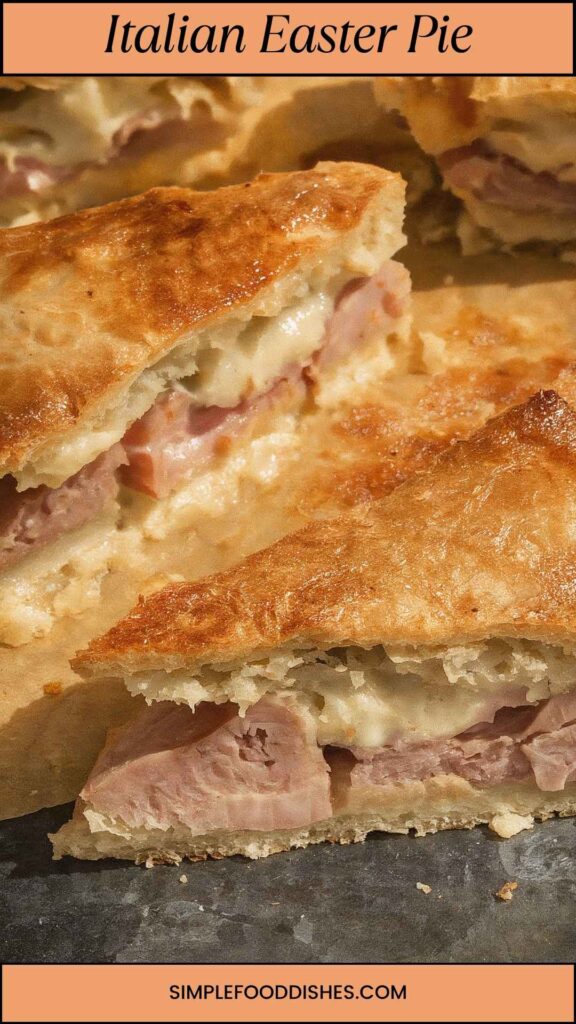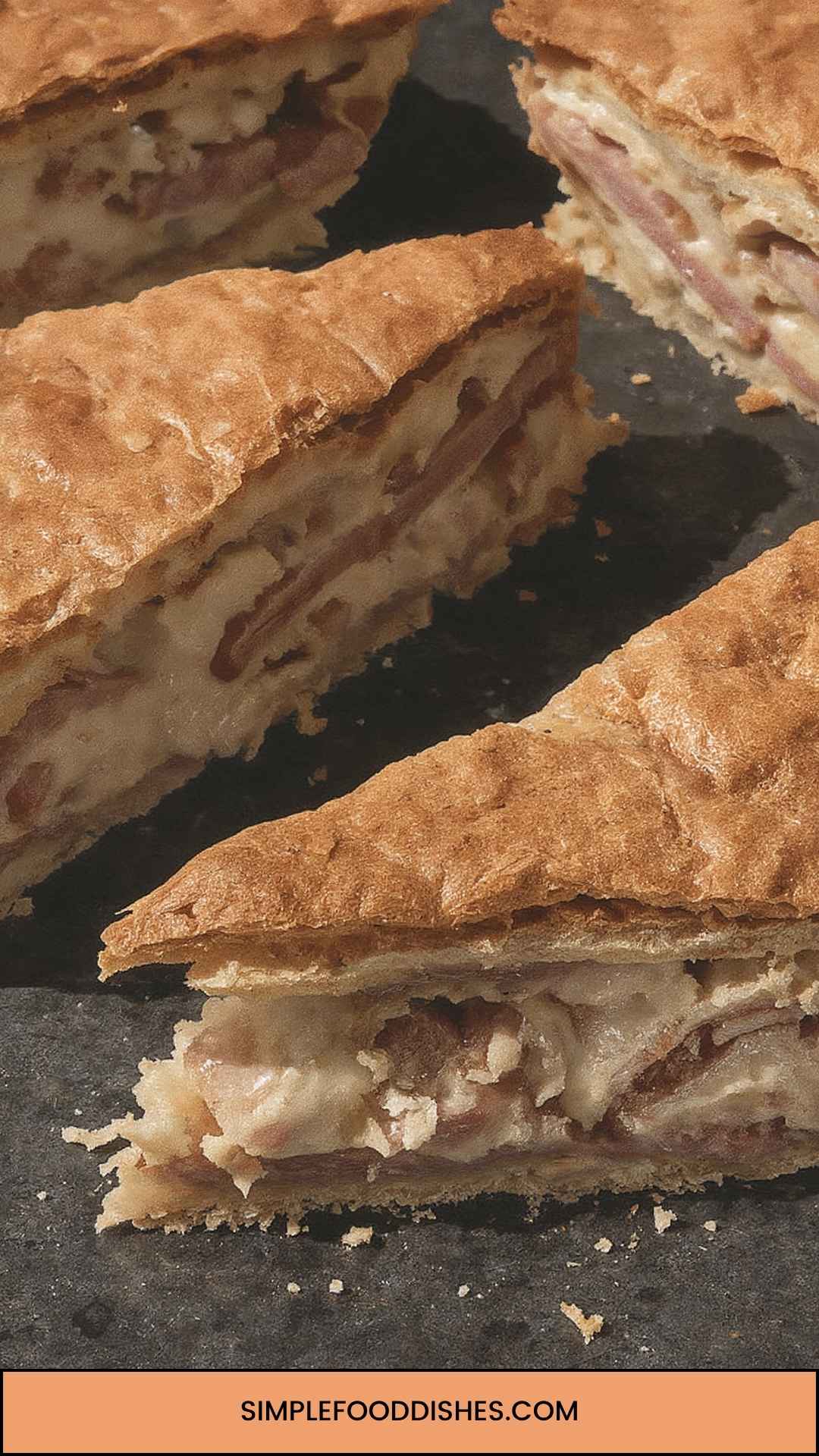When you think of Italian Easter pie, don’t just pencil it in as a stand-alone dish. Pair it with a fresh arugula salad drizzled with lemon vinaigrette. Or dive into a side of roasted vegetables, lightly seasoned with olive oil and fresh herbs. A chilled glass of Italian white wine, like Pinot Grigio, adds a delightful contrast to the rich flavors of the pie.
And if you’re feeling adventurous, why not tackle a refreshing Italian sorbet for dessert? There’s nothing like a vibrant lemon or blood orange sorbet to cleanse your palate after a hearty meal.
What is Italian Easter Pie?
To the untrained eye, Italian Easter pie may resemble a savory quiche or perhaps a galette, but it’s so much richer in flavor and tradition. This dish involves a flaky crust filled with a luscious mixture of cheeses, eggs, and cured meats. It's a dish that celebrates abundance and union, blending flavors and textures that dance together on your palate.
Imagine biting into warm, golden crust and tasting the velvety ricotta melded with robust prosciutto and a hint of nutmeg. This pie is often served at room temperature – making it incredibly versatile for gatherings, picnics, or holiday brunches. It’s a culinary embrace that invites you to savor every slice.
How Does It Taste?
If you've never tried it, you’re in for a treat. Expect a symphony of savory and subtle spices. The creaminess of ricotta balances with the saltiness of prosciutto, and the nutmeg offers a whisper of warmth. Each bite is a blend of flavors that evoke memories of family gatherings and laughter. It's rich but not overpowering, making room for that second slice (and maybe a third).
Why You'll Love This?
Here’s the thing: this Italian Easter pie transcends mere sustenance. It connects us to our roots. It’s easy enough to prepare, yet impressive enough to serve at any gathering. You’ll win over your friends, family, and anyone lucky enough to snag an invitation. It becomes more than just a dish; it’s a conversation starter. Pair it with the right sides, and you’ve got a meal that becomes an experience.
Ingredients
For the Crust:
- ¼ cup (56 g) extra-virgin olive oil
- ½ tsp (3 g) dried Italian herbs (optional)
- 2 Tbsp (30 g) whole milk (or substitute with half-and-half or cream)
- ½ tsp (3 g) fine sea salt
- 2 cups (250 g) all-purpose flour, up to 2 ½ cups if needed
- ¼ tsp (3 g) active or instant yeast
- ½ cup (70 g) cold water
For the Pie Filling:
- ½ tsp (2 g) freshly ground black pepper
- ½ tsp nutmeg (optional, enhances ricotta flavor)
- 3 large eggs (264 g), at room temperature
- 2 cups (246 g) ricotta cheese
- ½ cup (56.5 g) Parmesan cheese, finely grated
- 1 cup (168 g) Easter cheese or mozzarella, cubed, sliced, or shredded
- 8 oz (226.8 g) prosciutto, thinly sliced
For the Egg Wash:
- 1 large egg, beaten with a pinch of salt
Step-by-Step Directions
Step 1: Prepare the Crust
Start with a large mixing bowl. Combine the flour, sea salt, and dried herbs if using. Whisk them together. In a separate bowl, combine the olive oil, milk, and cold water. Pour this mixture into the flour mixture gradually. Mix until it comes together into a shaggy dough.
Now, knead the dough on a floured surface for just a minute or two until smooth. Cover with plastic wrap and let it rest in the fridge for at least 30 minutes. This step is crucial for a flaky crust.
Step 2: Make the Filling
In a mixing bowl, combine the ricotta cheese, Parmesan cheese, and Easter cheese. Stir well until thoroughly blended. Add in the eggs one at a time, mixing after each addition. Sprinkle in the black pepper and nutmeg (if using). Give it another good mix until everything is incorporated.
Step 3: Assemble the Pie
Preheat your oven to 375°F (190°C). Roll out your dough on a floured surface into a large circle. Transfer it gently into a pie dish, letting the excess hang over the edges. Pour the cheese filling into the prepared crust.
Fold the edges of the crust over the filling, pinching them lightly to create a decorative edge. Brush the top with the egg wash for that gorgeous golden hue.
Step 4: Bake
Bake the pie in your preheated oven for 50-60 minutes. You want the crust to be golden brown and the filling to be set. If the crust edges brown too quickly, cover them with strips of foil.
Step 5: Cool and Serve
Remove the pie from the oven and let it cool at room temperature for at least 30 minutes before slicing. This allows the filling to set beautifully.
Tips on Making Italian Easter Pie
- Use Quality Ingredients: The better the ingredients, the richer the flavor. Invest in a good-quality olive oil and fresh eggs.
- Bake Ahead: You can prepare this pie a day in advance. It’s just as delicious the next day, perhaps even more so as the flavors meld.
- Customize the Cheese: If Easter cheese isn’t available, substitute it with mozzarella or provolone. Each variation brings its own charm.
- Add Veggies: For a twist, consider sautéing spinach or leeks and mixing them in with the cheese filling.
- Flavor Enhancements: Add sun-dried tomatoes or roasted red peppers for an unexpected flavor burst.
Nutrition Information
One slice of Italian Easter pie (about 1/8th of the pie) contains approximately:
- Calories: 320-400 (varies by ingredient)
- Protein: 18g
- Carbohydrates: 32g
- Fat: 18g
- Sodium: 600mg
How Do You Store This Italian Easter Pie Recipe?
To keep your pie fresh, store leftovers in an airtight container in the refrigerator. Ideally, consume it within three days. You can also freeze it, which is a fantastic option if you’ve made too much. Just wrap it tightly in plastic wrap and then in aluminum foil before freezing. It can last for up to 3 months in the freezer. Thaw it overnight in the fridge before reheating.
What Other Substitutes Can You Use in Italian Easter Pie Recipe?
Here are some substitutes to diversify your pie:
- Zucchini or Eggplant: Instead of prosciutto, layer thin slices of grilled zucchini or eggplant for a vegetarian version. These veggies add a lovely texture and absorb flavors beautifully.
- Ricotta Variants: Swap out ricotta for cottage cheese or goat cheese for a tangy twist. Each cheese brings something unique to the palate.
- Meat Options: Instead of prosciutto, use cooked crumbled sausage or even smoked turkey for a different flavor profile.
- Herb Accents: Fresh basil or parsley can offer a fresh twist that brightens the overall dish.
- Nutmeg Alternatives: If nutmeg isn’t your favorite, cinnamon can offer an intriguing flavor angle, though it’s not traditional.
Conclusion
Creating an Italian Easter pie isn’t just about following a recipe. It’s about embracing a tradition that has been woven through generations. It’s a dish that welcomes everyone to the table, and at the end of the day, what’s more important than sharing a meal with loved ones? So gather your ingredients, roll up your sleeves, and dive into this culinary adventure. No matter the result, you’ll fill your home with warmth and joy. Now, that’s a recipe worth sharing.
You’ll also like the following Recipes!





